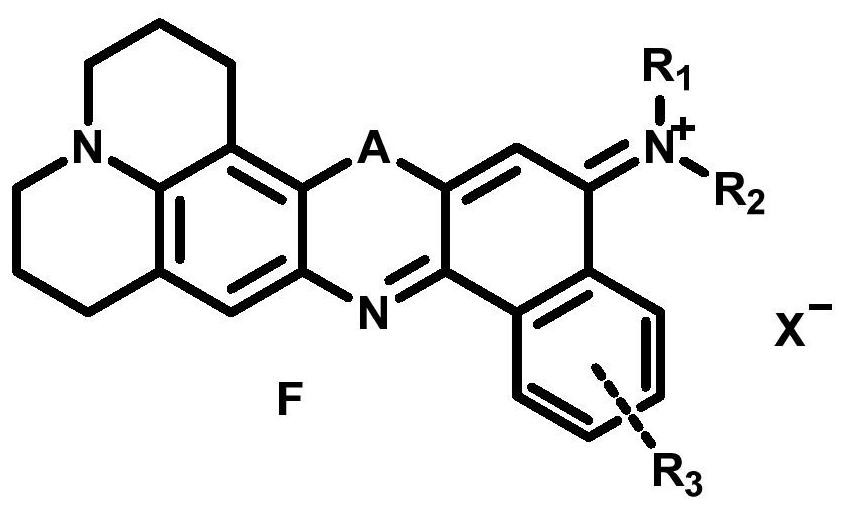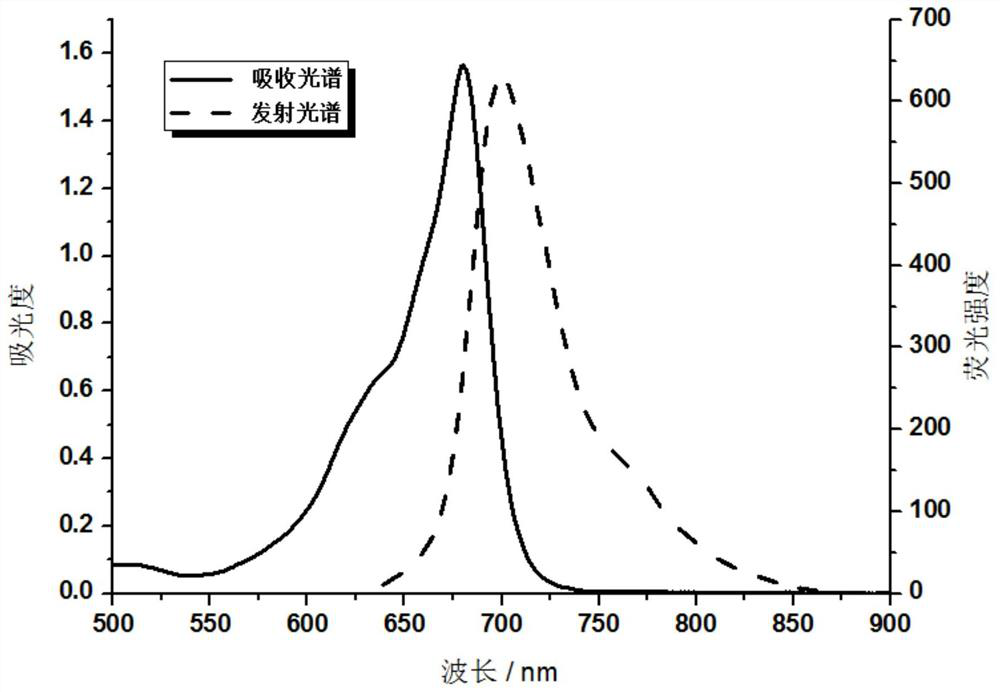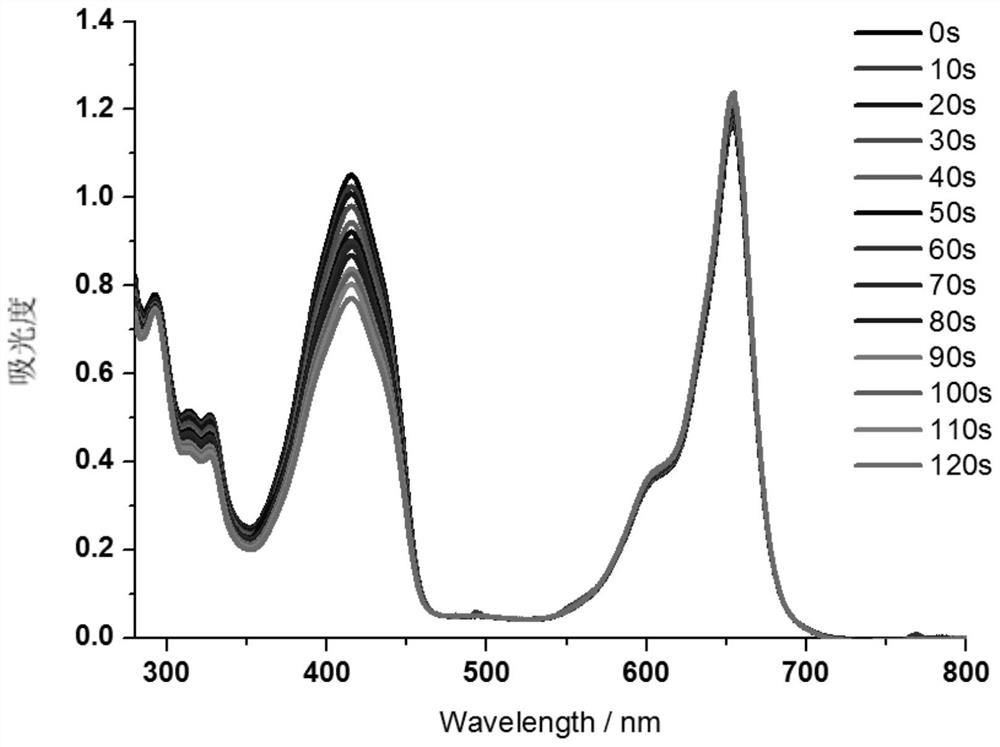Oxazine compounds and their applications
A compound, oxazine technology, applied in the field of synthesis of new oxazine photo/acoustic sensitizers, can solve problems such as unstable composition ratio of the treatment system, short excitation wavelength, slow metabolism, etc.
- Summary
- Abstract
- Description
- Claims
- Application Information
AI Technical Summary
Problems solved by technology
Method used
Image
Examples
preparation example Construction
[0046] The preparation method of the compound of general formula F represented by above-mentioned route comprises the steps:
[0047] (1) In the hydrochloric acid acidification system, p-nitrobenzenediazonium chloride and the compound of formula I were reacted at 25-35° C. for 0.5-2 hours according to the molar ratio of 1:1, to prepare the compound of formula II;
[0048]
[0049] (2) The compound of formula F was prepared by reacting the compound of formula II with 8-hydroxyquinoline at a molar ratio of 1:1 in acidic DMF at 135-145° C. for 2-4 hours.
[0050] The photo / acoustic sensitizer based on oxazine of the present invention has the following characteristics:
[0051] (1) It has certain water solubility and good cell membrane permeability;
[0052] (2) It has excellent near-infrared emission characteristics, and has low biological photobleaching, photodamage and phototoxicity when applied to biological imaging, and the generated fluorescent signal can penetrate deep ...
Embodiment 1
[0059] Embodiment 1: preparation compound F-1
[0060]
[0061] (1) Synthesis of intermediate 1-II
[0062] In the hydrochloric acid acidification system, the compound of p-nitrodiazonium chloride and 1-I was reacted at 25-35°C for 0.5-2 hours according to the molar ratio of 1:1. After the reaction was completed, a brick red color was obtained after suction filtration and washing. The compound of formula 1-II was obtained from the solid powder crude product with a yield of 95%.
[0063] (2) Synthesis of compound F-1
[0064] The intermediate 1-II and quinoline prepared by the above reaction (1) were added into a round bottom flask containing DMF, and 1 mL of perchloric acid solution was added dropwise. After the dropwise addition was completed, the system was stirred for 2.5 hours to stop the reaction, separated by silica gel column chromatography, dichloromethane:methanol (v:v)=8:1 elution and purification to obtain the target compound F-1 with metallic luster in dark bl...
Embodiment 2
[0066] Embodiment 2: compound F-1 spectrum test experiment
[0067] Using the compound F-1 synthesized in Example 1, add the F-1-DMSO solution into dichloromethane and mix well. Its spectral properties were tested by UV-Vis spectrophotometer and fluorescence spectrometer. The result is as figure 2 As shown, the F-1 molecule has a maximum absorption of 680nm and a maximum emission of 700nm in dichloromethane.
PUM
| Property | Measurement | Unit |
|---|---|---|
| Size | aaaaa | aaaaa |
Abstract
Description
Claims
Application Information
 Login to View More
Login to View More - R&D Engineer
- R&D Manager
- IP Professional
- Industry Leading Data Capabilities
- Powerful AI technology
- Patent DNA Extraction
Browse by: Latest US Patents, China's latest patents, Technical Efficacy Thesaurus, Application Domain, Technology Topic, Popular Technical Reports.
© 2024 PatSnap. All rights reserved.Legal|Privacy policy|Modern Slavery Act Transparency Statement|Sitemap|About US| Contact US: help@patsnap.com










